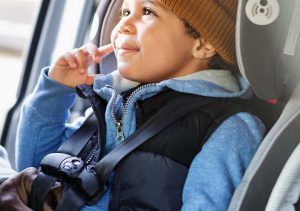 A new survey for BCAA conducted by Insights West from June 7-11, 2019, shows that busy B.C. parents are increasingly relying on others to get their kids where they need to go, raising concerns about unsafe travel and poor understanding of B.C.’s child passenger laws.
A new survey for BCAA conducted by Insights West from June 7-11, 2019, shows that busy B.C. parents are increasingly relying on others to get their kids where they need to go, raising concerns about unsafe travel and poor understanding of B.C.’s child passenger laws.
Carpooling to field trips and camp, rides from relatives, friends and child-care providers are just a few transport realities that parents face, particularly in summer when schools are out.
According to the BCAA survey, 77 per cent of B.C. parents with children in booster or child car seats, expect their kids to travel in another person’s vehicle this summer, with almost half (49 per cent) saying their kids are riding with others more than ever before.
At the same time, parents have concerns, with 74 per cent saying that they worry about their children’s safety when they’re not the ones behind the wheel and 25 per cent admitting to not being sure that those driving know the relevant laws and liabilities.
The latest statistics show that motor vehicle collisions remain the leading cause of accidental death for Canadian children. Child car seats, when used correctly, reduce the risk of fatal injury by 71 per cent and serious injury by 67 per cent.
To make sure kids are safe when driving with others, BCAA offers the following advice:
- Driver responsibility – B.C. laws state that the driver is responsible for a child’s safe transport and can be fined if they break the law and liable in an accident. Parents should make sure that the driver is clear on the laws and proper seat installation and fully accepts the responsibility. If a parent senses any hesitation or a lack of understanding of the seriousness of the task, it’s a good sign to explore another way to get their child where they need to go.
- Parent’s job – while the liability lies with the driver, it’s the parent’s job to understand and communicate the rules to the driver and make sure that the child car seat or booster seat meets Canadian Motor Vehicle Safety Standards and is installed properly.
- Plan ahead – parents are strongly advised to plan ahead. They should bring their own booster or child car seat and install it themselves. When installing the seat in another person’s vehicle, parents need to locate the Universal Anchor System or check that there is a lap/shoulder seatbelt and that it locks. If using a forward-facing child seat, locate the tether anchor in the position where the car seat will be installed. In Canada, all forward-facing child seats must be tethered.
- Using hired services – Parents riding with their child in hired services such as taxis or ride shares, should ensure full responsibility for the child’s safety. BCAA encourages parents to never expect drivers of these services to have knowledge of child passenger safety or to help with it – even if a hired service offers child car seats as an option.
BCAA provides information for parents as well as training child passenger educators in communities across the province. Its Community Child Car Seat Program donates child car seats to non-profit agencies and community groups working with families in need across the province and this year distributed its 10,000th child car seat.
For information on ther BCAA community programs focused on keeping kids safe on the road and at play through community programs such as School Safety Patrol, Child Passenger Safety and BCAA Play Here, visit bcaa.com.
